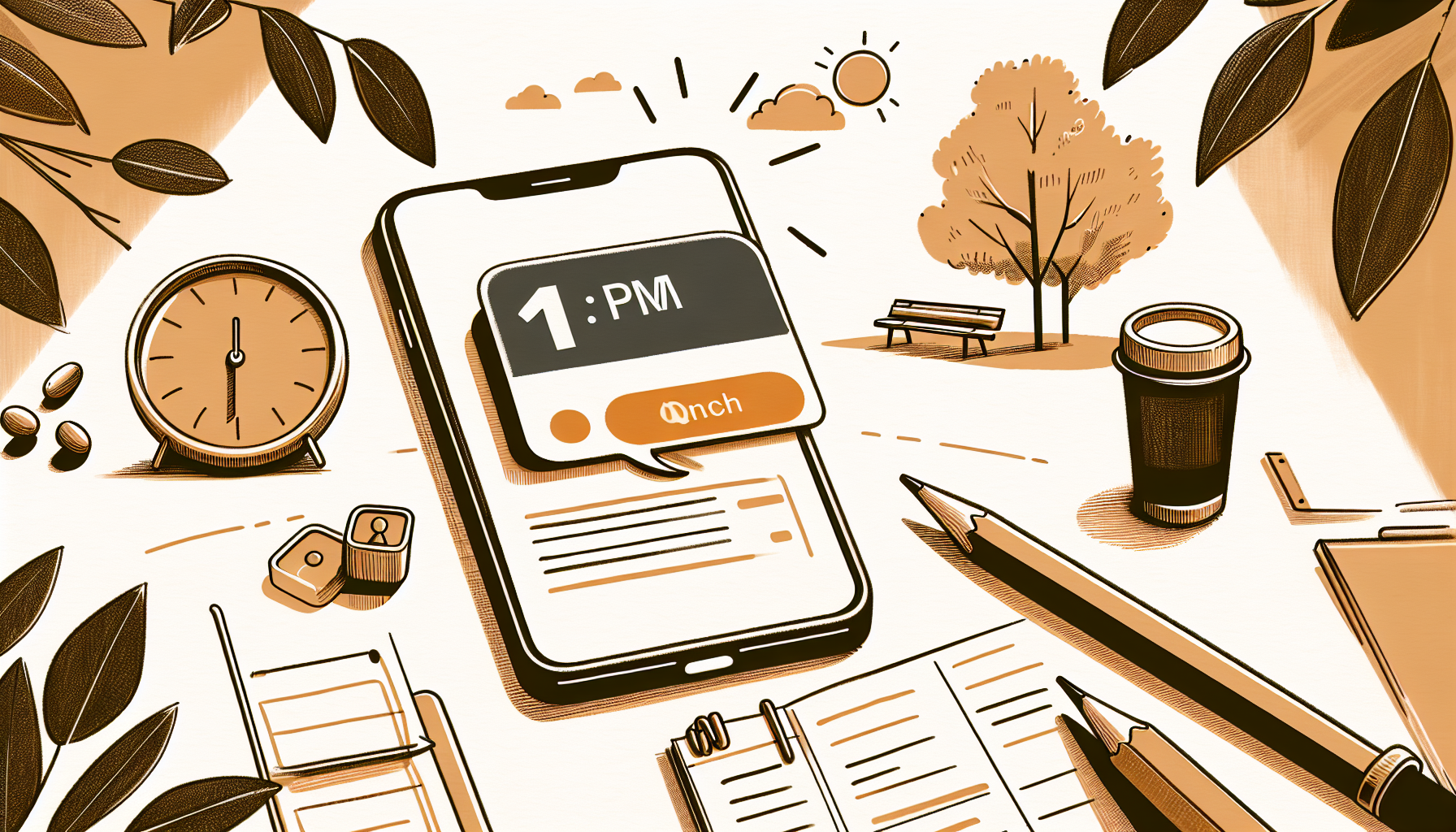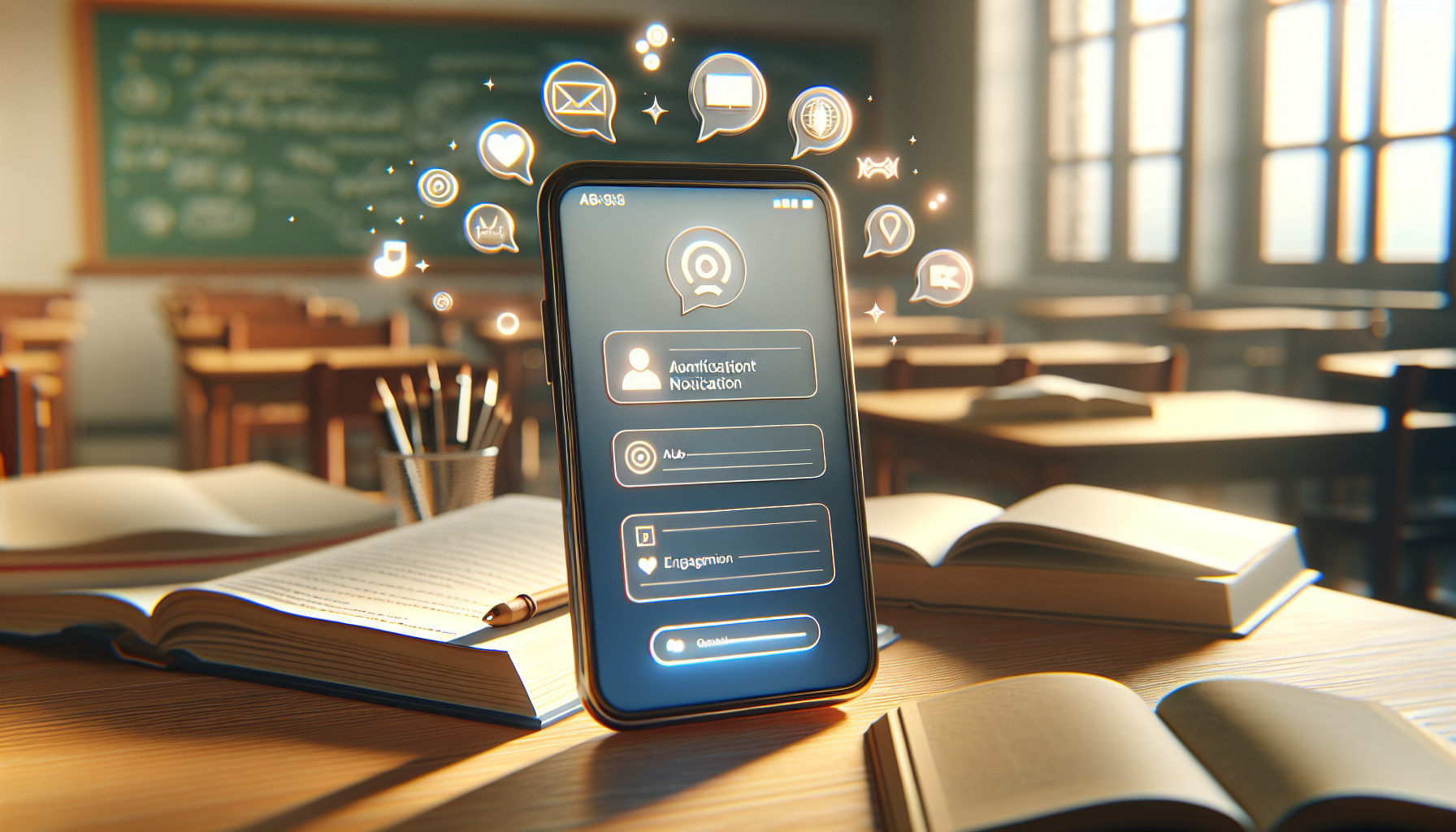We all know how tricky it can be to keep learners engaged, especially with distractions all around us. Mobile notifications might sound a bit intrusive, but trust me, they can actually play a pivotal role in grabbing attention and driving engagement.
Stick around, and I’ll show you how to effectively use mobile notifications to boost learner involvement. Plus, I’ll share some cool tips for making sure your messages hit the mark without becoming annoying.
From understanding the best types of notifications to picking the perfect timing, we’ll explore everything you need. Get ready to transform your learning experience one ping at a time!
Key Takeaways
- Use mobile notifications to keep learners engaged and informed.
- Segment your audience to personalize messages based on their behavior or preferences.
- Send notifications at optimal times, preferably during lunch (12-1 pm) or after work (7-8 pm).
- Aim for 2-3 notifications per week to avoid overwhelming learners.
- Include a clear call-to-action in every notification to encourage interaction.
- Measure effectiveness with KPIs like click-through and open rates, then adjust as needed.
- Consider using visuals in notifications to increase engagement rates.

How to Use Mobile Notifications to Engage Learners
Mobile notifications can be a powerful tool for engaging learners and keeping them connected to their educational journey.
To effectively use mobile notifications, start by considering your audience and their preferences.
Understanding when and how often your learners want to receive notifications is key.
A great way to start is by segmenting your audience based on their engagement history or course performance.
Personalized notifications that are timely and relevant can lead to significantly higher engagement rates.
For example, if a student hasn’t logged in for a while, a gentle reminder about upcoming deadlines or new content can prompt them to return.
Creating dynamic content that aligns with learners’ interests can Go a long way in increasing the click-through rate.
Benefits of Mobile Notifications for Learner Engagement
Mobile notifications offer various benefits that can greatly enhance learner engagement.
They provide immediate access to important updates, ensuring learners are promptly informed about course-related announcements.
This immediacy can increase the likelihood of students participating in discussions or activities, thus creating a more interactive learning environment.
Moreover, notifications can remind learners of deadlines, prompting timely submissions and reducing last-minute stress.
Additionally, timely alerts can boost course participation — when notifications are sent just before activities or quizzes, learners may be more likely to engage.
With an average click rate for push notifications at around 2.25%, the opportunity to capture attention is significant.
When strategically used, notifications can help foster a sense of community by encouraging learners to engage not just with the content but also with their peers.
Types of Mobile Notifications for Education
There are various types of mobile notifications you can implement to engage learners effectively.
Push notifications come to mind first; these are instant alerts that appear on a learner’s device.
You can send reminders about upcoming classes, new assignments, or changes in schedule with these notifications.
In-app messages, on the other hand, provide information while the learner is using the app, such as tips or additional resources relevant to their current module.
Interactive notifications can also be very engaging—these encourage learners to take action, like participating in polls or quizzes.
Additionally, email alerts serve as another way to communicate important messages, ensuring that learners have a record of notifications they can refer back to later.
Using visuals can further enhance notifications; for example, including images or emojis can increase open rates significantly — some studies suggest up to 9% and 70%, respectively.
Best Practices for Sending Mobile Notifications
To maximize the impact of your mobile notifications, it’s essential to follow some best practices.
First, ensure that the content is relevant. Nobody wants their phone buzzing with messages that don’t matter to them.
Keep your messages brief and to the point, as users typically skim notifications quickly.
Timing is crucial, too. Make sure to send notifications when learners are most likely to engage — the best times are typically between 12 to 1 pm and 7 to 8 pm.
Another good practice is to avoid overwhelming your learners with too many notifications. This can lead to notification fatigue, causing them to disable alerts altogether.
Instead, think quality over quantity. Focus on sending fewer, more impactful messages.
Lastly, always include a clear call-to-action. Encourage learners to click through for more information or to complete a task to boost engagement further.

Timing and Frequency of Mobile Notifications
Finding the right timing and frequency for mobile notifications can be a game-changer in engaging learners.
Studies show that sending notifications between 12 to 1 pm and 7 to 8 pm yields the highest engagement rates, reaching nearly 60% delivery efficiency during those times.
By aligning notifications with lunch breaks or after-work hours, you’re more likely to catch your audience’s attention when they’re ready to engage.
Moreover, consistency is important. Sending notifications at the same times can help learners anticipate and look forward to receiving updates.
However, moderation is key to avoid overwhelming them. Aim for 2-3 notifications per week to keep your audience informed without causing notification fatigue.
Remember, it’s a fine balance; overloading students can lead them to turn off notifications entirely.
To keep things fresh, consider mixing content types in your notifications—reminders, tips, or motivational quotes can all add variety.
Utilizing A/B testing can help you refine your timing and frequency strategies, ensuring your messages hit just right.
Personalizing Notifications for Better Engagement
Personalization can significantly elevate engagement rates for mobile notifications.
By tailoring notifications based on learner preferences or behaviors, you can make them feel more relevant and impactful.
Statistically, targeted push notifications can increase click-through rates by up to 56% and boost retention by 39%.
Start by segmenting your audience; you might group learners based on their course enrollments, completion rates, or past interactions with notifications.
For example, if a user often skips quizzes, a friendly reminder about the benefits of practicing could encourage them to participate more actively.
Using learners’ names in notifications, or referencing specific courses they’re engaged in, also adds a personal touch.
Don’t forget to track user interactions with notifications to refine your approach over time.
This data helps you understand what resonates, allowing you to fine-tune content that genuinely speaks to your learners.
If a segment of your audiences thrives on visual content, incorporating images could heighten engagement, as visuals can improve open rates by 9%!
Measuring the Effectiveness of Mobile Notifications
Measuring the effectiveness of your mobile notifications is crucial for ongoing improvement.
Start by establishing key performance indicators (KPIs) that align with your engagement goals.
Common KPIs include click-through rates, open rates, and interaction times following a notification.
Regularly reviewing these metrics enables you to assess what works and what doesn’t.
For instance, if you notice a low click rate (averaging 2.25% for push notifications), you might need to revamp your messaging approach.
A/B testing different types of notifications can help you identify which content resonates best with your learners.
Additionally, soliciting feedback from your learners can provide qualitative insights. Simple surveys asking about their preferences can be valuable.
Over time, this data will help you create notifications that not only inform but also inspire and engage your learners more effectively.
Remember, the ultimate goal is to create a responsive learning environment where notifications enrich the educational experience.

Common Challenges and Solutions
While mobile notifications can boost engagement, they come with their own set of challenges.
One common issue is notification fatigue, where learners feel overwhelmed by too many messages and stop paying attention.
To tackle this, focus on sending essential updates only, and consider allowing learners to customize their notification preferences.
Another challenge is low open rates, which can happen if notifications seem generic or irrelevant.
Personalization is key here—tailor messages to the specific needs and behaviors of your audience.
Additionally, technical issues can occur, such as notifications not appearing due to app permissions or device settings.
Encourage learners to check and adjust their notification settings and provide clear instructions on how to do this.
Lastly, balancing promotional messages with valuable content is crucial; too much marketing can alienate learners.
Ensure that every notification adds value to the learning experience, whether it’s a reminder, resource, or motivational message.
Case Studies: Successful Use of Mobile Notifications in Learning
Looking at real-world examples can provide insightful lessons on effective mobile notification strategies.
For instance, a language learning app experienced a 30% increase in daily active users after implementing personalized notifications.
They sent reminders tailored to individual progress, encouraging learners to practice regularly and celebrate small victories.
Another case involved a university that used push notifications to inform students about important deadlines and events.
The initiative led to a 40% rise in event attendance, proving that timely reminders can cultivate a stronger campus community.
Additionally, an online course platform reported an impressive 50% improvement in course completion rates after integrating interactive notifications.
These notifications encouraged students to engage with quizzes and discussions, making the learning process more dynamic.
Clearly, these examples show that when well-executed, mobile notifications can make a significant impact on learner engagement.
Future Trends in Mobile Notifications for Education
The landscape of mobile notifications in education is evolving, with several exciting trends on the horizon.
One key trend is the use of artificial intelligence to enhance personalization.
AI can analyze learner behavior and preferences to send highly targeted notifications that resonate better.
Another trend is the rise of gamification in notifications, where learners are encouraged to complete challenges and earn rewards through messages.
This can create a fun and engaging learning environment that motivates students to participate actively.
Moreover, voice-activated notifications are gaining traction, allowing learners to interact with their learning materials hands-free.
This can be especially useful for busy learners who are multitasking.
Lastly, with the ongoing emphasis on mental health, notifications that promote well-being and remind learners to take breaks or manage stress can become more commonplace.
Incorporating these trends can not only keep notifications fresh but also foster a more holistic approach to learner engagement.
FAQs
Mobile notifications enhance learner engagement by providing timely reminders, personalized messages, and instant updates. They improve communication, increase participation in courses, and foster a sense of community among learners.
Best practices include sending notifications at optimal times, personalizing messages, keeping content concise, and ensuring relevance. Additionally, avoid overloading learners to prevent notification fatigue.
Effectiveness can be measured through metrics such as open rates, engagement levels, feedback surveys, and completion rates of learning tasks. Analyzing this data informs adjustments for better outcomes.
Common challenges include notification fatigue, unclear messaging, and timing issues. Solutions involve segmenting your audience, personalizing content, and scheduling notifications thoughtfully to maintain engagement.
